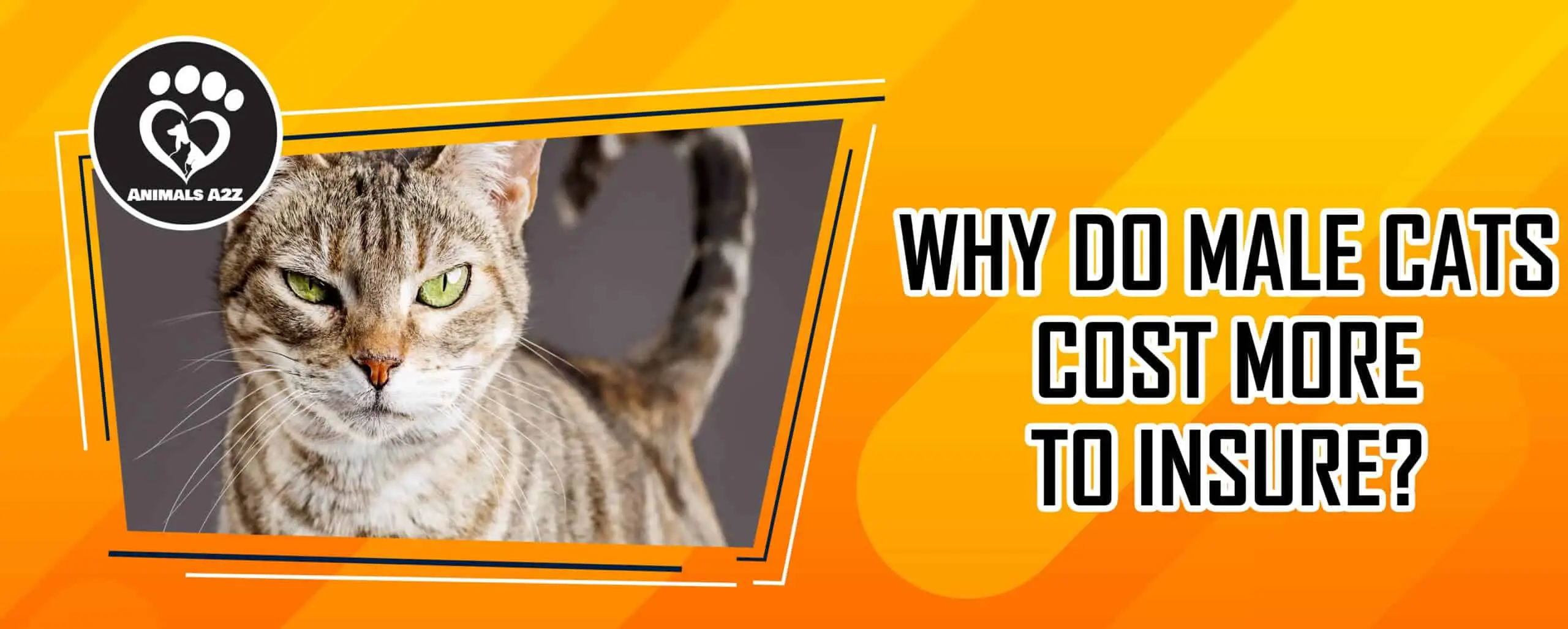As a pet owner, you want to make sure that your cat lives their best life. However, sometimes accidents can happen, and they may need to go to the vet. With pet insurance, you can rest easy knowing that the majority of the cost for healing your cat will be covered.
Table of Contents
But have you ever wondered why male cats often cost more to insure?
The answer is that male cats are more prone to certain health problems, some of which can be inflicted by their way of life. They are also more susceptible to injury due to accidents and their rougher and more territorial nature, so pet insurance for male cats costs more.
Read on to find out more and why you should insure your cat.
How much will it cost to insure a cat?
There are different types of cat insurance policies available to owners when they are looking to buy insurance. The benefits can vary depending on how much you are willing to spend. A lot of people opt for basic insurance if their cat is primarily indoors, as there is less risk.
This can sometimes be a time limited policy or an accident only one. However, if you have an outdoor cat that might get into fights or could injure itself in other ways, lifetime insurance can be the best option.
Our top3 cat insurance providers
PetPlan - Start quote
Eusoh - Start quote
Petsbest - Start quote
Average monthly cost for cat insurance average between $20 for kittens and $100 per month for older cats. Remember to always get quotes from more than one provider!
Other factors that can cause the price of cat insurance to rise or fall include your address, your cat’s age, their breed, and even the sex of your cat.
In the UK, the average cost for insuring a cat can range from £65 a year to £260, depending on the policy taken out and what it covers.
In the US, the price of the average pet insurance for a cat ranges from $40 a year to $480 a year.
Why do male cats cost more?
If you happen to have a male and a female cat, you will notice that the male costs more to insure. The reason for this is that male cats are more susceptible to certain conditions, such as blocked bladders from UTIs. This means they will need more trips to the vets to fix the recurring problem.
If your cat is an outdoor one, it may be more likely to get into fights if it’s a male. This is because males are territorial and might not want another cat going near it or the home it occupies. Most people will neuter their male cats in the hopes that it lessens their territorial side, but it in is their nature to be protective.
However, even if your male cat stays indoors, they can still get into fights with other cats in the household. Whether it is play fighting or more serious, accidents happen, and it only takes one scratch to injure another cat.
Do I really need insurance for my cat?
Every pet owner hopes that nothing will happen their pet and that they will live a long and healthy life. Unfortunately, this isn’t always the case.
Some owners believe that if their cat is indoors, they don’t need to have insurance. The reality is that most trips to the vet are because of an illness, rather than an accident. Depending on what the illness is and whether the cat will have it for life, it can become quite expensive overtime to treat it.
Having pet insurance gives you peace of mind knowing that veterinary costs will be covered if you can’t afford it. After all, even a small injury can cost hundreds of pounds or dollars, depending on where you live.
In fact, there are many cases when treatment for a pet has cost thousands. Most owners simply can’t afford these costs on their own and end up with no choice but to put their pet down.
Frequently asked questions about pet insurance
What types of pet insurance are there?
Before you decide on insurance for your cat, you need to know what types there are for you to choose from. Most insurance providers offer the three below, but some will also offer Accident Only policies. These are the cheapest you can get for your pet. The other policies are as follows:
- Time Limited – This type of policy will cover your cat for a specified amount up to a period of 1 year. It will often run from when an illness or accident happens. Once the year is up and a condition is still ongoing, it will be classed as a ‘pre-existing condition’ on any future policies, meaning it won’t be covered.
- Maximum Benefit – This policy will cover a set amount per condition for as long as the policy is active. It will allow you to make multiple claims for a single condition, but the amount must be within the limits of the policy.
- Lifetime – This is the most expensive and comprehensive of all the policies. It will cover many conditions, including those that can last a lifetime such as arthritis.
What is covered by pet insurance?
Pet insurance will cover basic vet fees, as well as other expenses. Some insurance providers will cover a pet death or if the pet is lost or stolen. Below you can see some of the things that are covered by pet insurance:
- Accidental damage
- Complementary treatment
- Death
- Dental cover
- Kennel or cattery fees
- Lost or stolen pets
- Being put to sleep (although not all policies will cover this)
- Third party liability
- Travel
You will need to look over the policies carefully to see what is included. Sometimes you will need to choose a more expensive policy that will cover most of these listed items.
What isn’t covered by pet insurance?
When it comes to exclusions from insurance policies, these are the ones that they have in common, no matter what kind of insurance you get:
- Pre-existing conditions
- Routine and preventative treatment (vaccinations, grooming, flea or worming etc.)
- Any illness that starts in the first 2 weeks of coverage
Don’t delay insuring your cat
It is important that your feline friend is insured, even if it costs more if they’re male. You will feel grateful knowing that they are safe, and you are financially secure should something happen to them.


